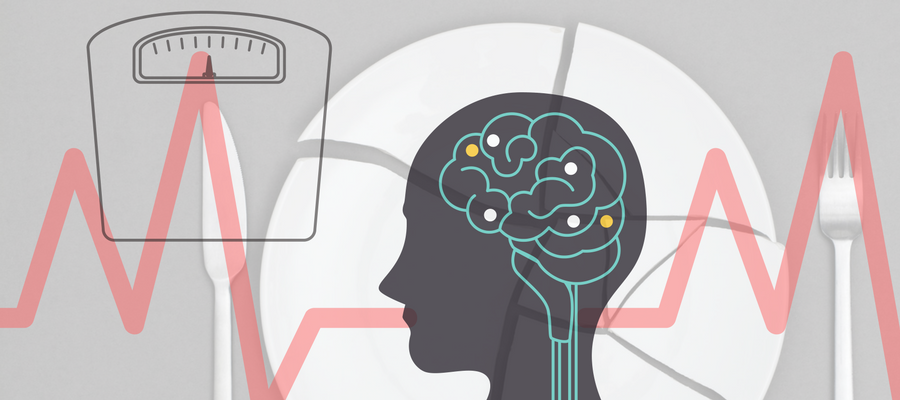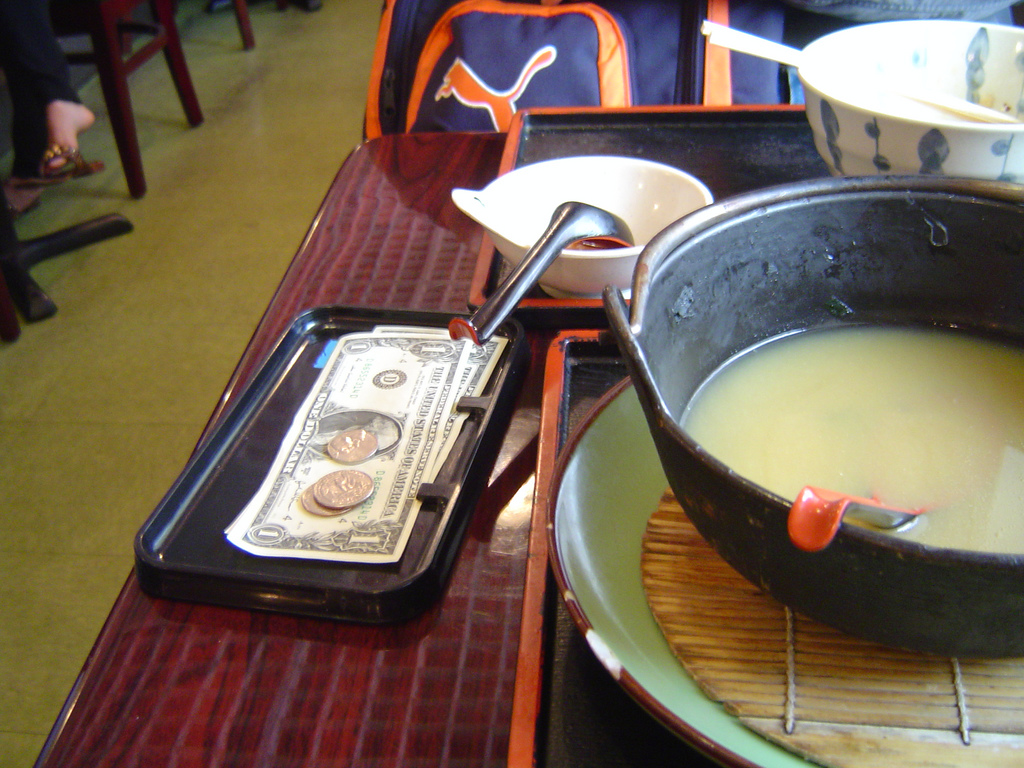
From birth, Jessica says, she was sexually abused. Until she was 14, she was a victim of sex trafficking. And then she entered into an abusive relationship.
That abuse, and the trauma she built up during those experiences of acute powerlessness, had broken her. She was always on guard, she says, super jumpy and hypervigilant.
There was, however, one sliver of her day-to-day existence where she felt she had dominion over her experience.
“I couldn’t control anything in my life,” Jessica says. “So I decided I would control my food.”
Jessica, whose last name we won’t use to protect her privacy, is now 20. But she began suffering from anorexia when she was just 12 years old.
And then, when she was 17, Jessica discovered Newport Academy, a rehabilitation center for teens in Orange County, California, while she was flipping through a magazine. The academy treats trauma, mental health issues, eating disorders, and substance abuse. But the core issue it addresses, says its website, is a lack of self-esteem.
By that point, Jessica had been suffering from at least two of those conditions for five years. Only now, after treatment, does she see that all the work she was doing to stay thin had taken over her life. She wasn’t in control of her food. It was in control of her.
“I had to battle the constant thoughts,” she says, “that food was going to make me sick.”
For the better part of a decade, medical schools at Tulane University in New Orleans, Louisiana, and Tufts University, in Medford, Massachusetts, among others, have been studying how nutritious food can function like medicine. Medical doctors at clinics in Houston and Miami write fruit and vegetable prescriptions for patients. At the University of Southern California, in Los Angeles, medical students learn how to cook healthy meals, as part of a “prescription” for their patients’ health.
The thinking behind this approach is that helping patients to eat healthier will ward off diseases that are directly linked to diet, like diabetes, obesity, and hypertension. And the field has undergone a 20-year evolution into what we now call “culinary medicine,” or “food as medicine.” As obvious as the concept sounds, nutrition concerns remain underappreciated, in terms of driving public health policy. This year, for the first time, a Congressional working group will be briefed on medically tailored meals, as part of health care.
But what’s still ahead, and yet to be fully explored, is the notion that food, and the very rituals of eating, could also have the power to heal afflictions of the mind. In the relatively young field of trauma therapy, for example, doctors tend to employ approaches that rely on a combination of medicine and talk therapy, much of which is about managing the biochemical releases associated with trauma. The goal of these treatments is to first identify the source of a trauma and then to identify triggers. To do that, patients have to slow down and pay very careful attention to their feelings.
Jessica did something similar in the garden and around the dinner table as part of her treatment at Newport.
Zurofsky is more interested in the under-explored relationship between food and mental health. At a recent press event, he spoke enthusiastically about the microbiome—or the gut—which controls the majority of our bodily processes. For a long time, the thinking around the microbiome and diet has had to do with the triggers for debilitating autoimmune disorders, like irritable bowel syndrome. But the microbiome, through its interaction with the endocrine system, is also the “master,” as Zurofsky says, of important emotions, such as happiness, depression, and anxiety.
Since he became Newport’s dining director three years ago, Zurofsky says, the program has taken that connection between gut and brain almost for granted. He wants to push the prevailing wisdom a step ahead. It’s not just that food can affect and change emotions, he says, but that the entire act of eating, the physical process—farm to table in the most literal sense—can be analogous to the trauma healing process.
“We talk about understanding of, and comprehension around, what is the true healing power of this food,” he says. “The ideas around the transformative power of not just food, but the table, and the context in which we enjoy our food, and the memories we create, and the social connections that we make in that experience—how powerful that is to heal us.”
Zurofsky even has a name for the approach: the meal as medicine.
At Newport, meals around the table were quite literally time for fun and games
When Jessica was at Newport, she spent much of her day in group sessions led by doctors, therapists, and even a nutritionist. But when it came time to eat, similarly, there was an entire therapeutic program centered around her meals, too. (Jessica attended Newport before Zurofsky became the culinary director.) It began in the garden: specifically, two raised planters that Jessica and other patients helped build and fill with soil. She planted vegetables and harvested them when they were ready. There are numerous benefits associated with growing your own food—control over the methods used being one of them. For Jessica, as for many Americans who are enamored of urban agriculture, the idea was to take away the mystery behind where the food came from and how it was produced, and regain agency in what she ate.
“I could see exactly what was going into my food,” she says.
The anxiety that Jessica felt around what she put into her body was further assuaged by the presence of a chef she could trust. At other hospitals, she says, she worried that cafeteria workers or nurses wouldn’t portion her food the way she wanted, and didn’t trust them to take care of her. That was different at Newport, where she had a closer relationship with the people feeding her.
Most important to the meals were the moments of meditation prior to eating. Before Jessica came to Newport, she says, just looking at a plate of food was uncomfortable. Every part of her being wanted to pick it apart into tiny shreds and pieces. She calls that a “food ritual,” and it was a common technique she used to avoid eating.
But at Newport, patients must participate in a minute of meditation before every meal. Simply learning to breathe, Jessica says, slowed her down and gave her space to recognize those desires, those anxieties, before she was overcome by them.
It helped, too, to eat with staff who were very familiar with the thought patterns she was plagued by. Jessica says she was “notorious” for shutting down during meals, and counting calories in silence, deep in her head. That wasn’t allowed at Newport, where meals around the table were quite literally time for fun and games. Former patients described meals textured with wordplay and guessing games, and staff who created a “light” atmosphere to unwind after a day of intense therapy. Even now, another recovered patient told me, she still associates meals with “fun conversations.”
Eventually, as her body became nourished again, Jessica left “starvation mode.” Eating became easier. Mealtimes, too, became enjoyable, not a crucible. And then, she says, she realized she actually liked eating potatoes.
“Most common, this type of thing is treated in a hospital setting, [you’re] stabilized for three to seven days, and then you go back home,” Zurofsky says. “And it just becomes a vicious cycle.”
Zurofsky is a big believer in the benefits of eating a meal with other people while seated at a table. And while it’s unclear if the serving ritual has actually been implemented at Newport, or is merely something he aspires to, I grasped the point: my meal was inextricably connected to, and enabled by, the people around me. I was no island.
Newport Academy treats adolescents and young adults aged 12 to 20 with primary psychiatric disorders, most commonly anxiety and depression. Many of them have experienced suicide ideation, or attempted suicide before, according to Monroe. Some are sent to Newport to get clean after experimenting with drugs or alcohol. Others have been diagnosed—or misdiagnosed, as Monroe believes—with bipolar disorder or ADHD.
For Jessica, the idea was to take away the mystery behind where the food came from and how it was produced, and regain agency in what she ate
During their stays, which can last up to three months, patients have individualized treatment plans. They include traditional psychotherapy and medication management, administered by psychologists and psychiatrists, as well as sessions with social workers and marriage and family therapists. Young women like Jessica, who go specifically to treat eating disorders, also have sessions with nutritionists. Almost 70 percent of adolescent girls and young women at Newport Academy have an eating disorder, or experience some form of “disordered eating,” according to Monroe.
Newport isn’t for everybody. Jessica was treated at an inpatient center in Orange County, California, that now hosts up to 25 patients; another one, which opened later, in Litchfield, Connecticut, can treat up to 50 patients. Newport also runs outpatient centers, as part of the post-treatment transition, in Darien, Connecticut, Philadelphia, Pennsylvania, and also in Orange County. This year, the academy is expanding, with two more treatment centers coming in the San Francisco Bay Area and outside Washington, D.C. In emails to the New Food Economy, Monroe said 95 percent of fees related to treatment are covered by insurance, both in and out of network, with “nominal” out of pocket expense.
For those who do arrive for treatment, the meal can be a crucial part of the therapeutic plan. Staff say it’s an opportunity for patients to begin learning where their anxiety around eating comes from.
Newport has become known for other techniques that use mindfulness to treat anxiety and trauma. Newspaper and TV coverage has focused on equine therapy, for instance, as well as the art therapy and yoga classes. Zurofsky’s meal-as-medicine program is of a piece with this but, outside the medical community, it’s known by another name: mindful eating.
That’s a concept we’re all familiar with. The precepts are remarkably similar to those processes that Newport patients are taught at the table. Eat slowly. Pay attention to what you’re eating. Check your levels of satiety. Listen to your body. In popular culture, mindful eating has its place in Oprah interviews, and TV segments about avoiding binges. It’s deeply ingrained in the culture of some countries. In Japan, for instance, eaters know to chew their food at least 20 times before swallowing.
Zurofsky concedes there is some overlap at Newport. But his program, he points out, isn’t only concerned with the act of eating. He wants to give his patients the opportunity to understand and participate in the elements that go into preparing the meal, like growing and harvesting produce in a garden, and even the mundane aspects of ingredient sourcing, like grocery shopping.
By creating some context around the meal, through processes of education, gardening and dining, Zurofsky believes he can teach patients to minimize their desire and anxiety around controlling it. Ultimately, he believes, thinking about the meal holistically, as a kind of social and mental health medicine, is a mindset that can catch on.
“Good food doesn’t scale. We’ve seen that. Chipotle breaks down,” he says. “But this practice is something you can do. It’s free. It heals. And it amplifies all the other work you’re gonna do. It’s a practice as much as anything else.”
That’s optimistic. Not everyone with a diagnosed eating disorder, or disordered eating patterns, has the luxury of inpatient care and treatment. But his point is well-taken. All the kale in the world won’t make for healthy eating if your mind and spirit aren’t healthy, too.
UPDATE, 5:15 PM EST: This piece was updated with additional information about the cost of treatment.












